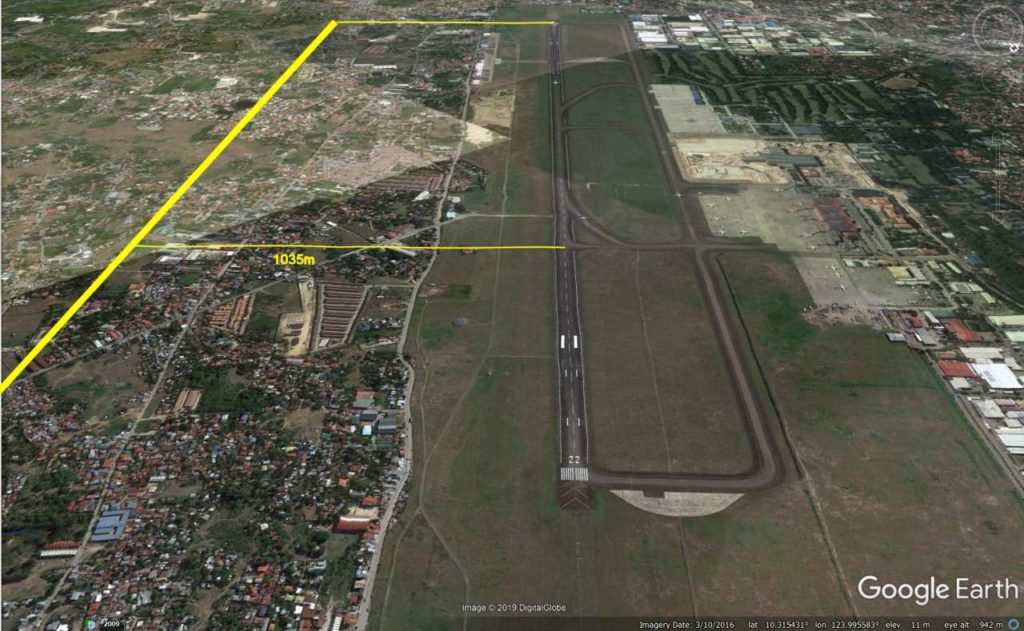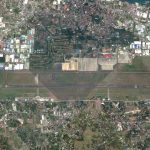Two Runways for Mactan-Cebu Airport? Space Problems are programmed!

Two Runways for Cebu-Mactan Airport (MCIA) – The House of Representatives on April 3, 2019, approved on second reading a bill that seeks to provide for the construction of a second runway at the Mactan-Cebu International Airport (MCIA) in Lapu-Lapu City, Cebu.
The political voices
Politicians say the MCIA deserves a second runway, as it is serving one of the fastest growing metropolises in the country. Metro Cebu is considered the second largest urban centre of the Philippines and one which is internationally known and recognised.
One rule of thumb is that a single runway can cater to passenger traffic of around 15 million passengers per year. This maximum is possible especially if the flights can evenly be smothered out over the 24-hour period in a day. Considering all the flight movements, domestic and international commercial flights, together with general aviation and military aircraft movements, the runway capacity at MCIA may only be sufficient till 2024.

Under the bill, the DOTr, in coordination with the MCIAA, will finance and conduct the feasibility studies and the formulation of the detailed engineering designs, standards and specifications of the proposed runway, as well as the concomitant access taxiways and rapid exit taxiways, runway lighting systems, navigational/landing equipment and other appurtenances as may be necessary for the effective implementation of the Act.
The financial voices
The MCIAA has hired consultants for the design and construction of a second runway which already has funding of PHP 2.5 billion.
The MCIAA does not have to request for the amount because they have already allocated funds for the second runway. There is also a proposal from GMR-Megawide Cebu Airport Corp. (GMCAC) to construct a third runway in Barangay Ibo.
If Congress wants to allocate funds for the second runway, that will replenish our PHP 2.5 billion funds already allocated for it. The funds came from the PHP 14.4 billion paid by GMCAC as part of the 25-year concession to operate the airport terminal.
The International Regulations
Based on ICAO doc9157 Aerodrome Design Manuel Part1 Runway, the minimum distance between centre lines of 2 parallel( or near-parallel ) runways is
For Visual Meteorological Conditions (VMC) operation:
- 210m for category 3( runway length=1200m-1800m ) and category 4( runway length>1800m )
- 150m for category 2( runway length=800m-1200m )
- 120m for category 1( runway length<800m )
And for Instrument flight Condition (IMC) operation:
- 1035m for independent parallel approaches ( radar separation minima between aircraft and adjacent centre line is not prescribed)
- 915m for independent parallel approaches ( radar separation minima between aircraft and adjacent centre line is prescribed)
- 760m for independent parallel departures or Segregated parallel operations (one exclusive for departure and another for landing)
When two runways are closer than the regulations above, only one can be “operated” at the same time (eg: LGW). Even though only one of the parallel runway would be operated at the same time, the separation of the runway have to follow the “Runway strip rule”, which is 75m each side from the centre lines for category 3/4.
Therefore minimum distance of two parallel runways is the sum of the strips, ie: minimum distance of two parallel 4E/F runways is 75+75=150m from their centre lines.
The above is global standard which represents the minimum requirement of runway , other aviation authorities such as FAA in US may have stricter standard.
Let’s visualise: Two Runways for Mactan-Cebu Airport
Following above ICAO regulations the future Mactan-Cebu Airport would look as this:
The 210 minimum solution working only for visual approach


The minimal 210 m separation solutions could both be built. But they would only work under Visual Meteorological Conditions (VMC). This is an absolute “no go” for an international commercial airport.
The 760 m alternate solution needs more space


All landings on one runway and all take-offs on the other one. Both solutions (left and right) would cost big money because of indemnification and relocation.
The 1035 m maximum solution


The distance of 1035 meters between the runways allows fully independent operation. The 22R runway would remove the Mactan golf club and barangay Ibo. This barangay is mostly industrial and rather easy to relocate. The existing terminal buildings could be transformed. Maybe the Waterfront hotel would become even more an “Airport Hotel”.
We are curious to learn, which solution will be proposed.
Hong Kong’s International Airport with 2 parallel runways











Maybe the second runway could be build on a reclaimed land northeast of the airport/island.
Feasible but extremely expensive. Imagine an artificial island of at least 4 square kilometers! Add more for the taxiways and other infrastructure.
I don’t think that RP can afford such a project.
Chher, waebi